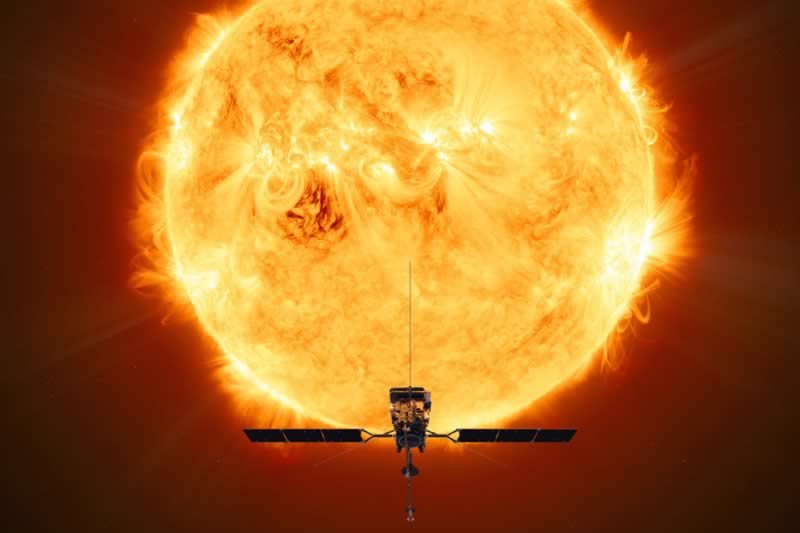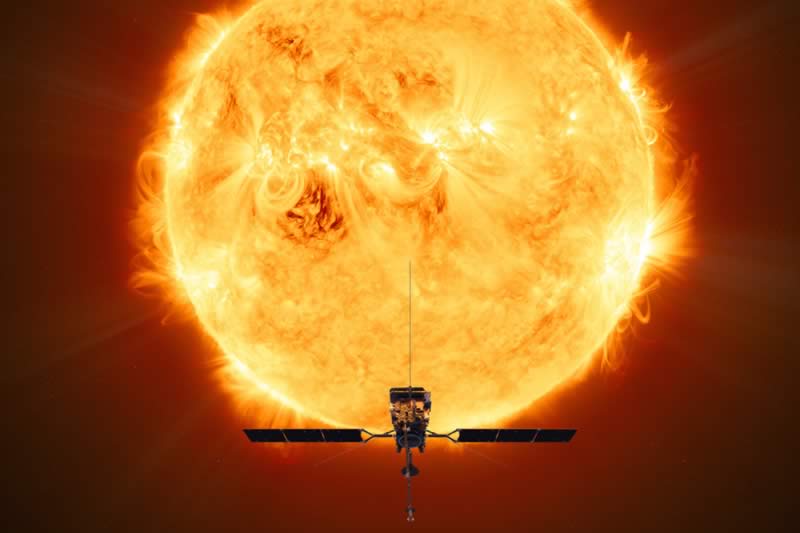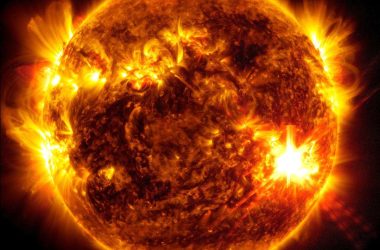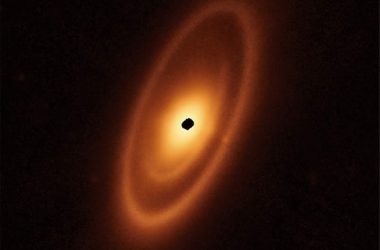
The UK-built Solar Orbiter is preparing to leave Germany, where it has been undergoing final testing, for its launch site at Cape Canaveral in Florida, USA.
From:UK Space Agency and Chris Skidmore MP
United Kingdom-(ENEWSPF)- Due to launch in February 2020, Solar Orbiter will perform unprecedented close-up observations of the Sun. It will allow scientists to study the Sun in much more detail than previously possible and to observe specific features for longer periods than can be reached by any spacecraft circling the Earth. In addition, Solar Orbiter will measure the solar wind close to the Sun and provide high-resolution images of the uncharted polar regions of the Sun.
The UK is at the heart of this European Space Agency (ESA) mission to uncover the secrets of our planet’s star. The UK has key industrial roles on the spacecraft build and operations and has won €200 million worth of contracts, while the UK Space Agency has invested £20 million for the development and build of the instruments and will continue to support them.
Science Minister Chris Skidmore said:
I am delighted that the UK has played such a leading role in this mission to observe uncharted regions of the Sun. From mobile phones to electricity networks, our scientists will make new discoveries about the impacts of space weather on our daily lives.
Our commitment to the European Space Agency means UK research and engineering teams will continue to be at the heart of the new space age after we’ve left the EU, creating highly-skilled jobs and supporting our economy.
Solar Orbiter will carry 10 state-of-the-art instruments. Remote sensing payloads will perform high-resolution imaging of the Sun’s atmosphere – the corona – as well as the solar disk. Other instruments will measure the solar wind and the solar magnetic fields in the vicinity of the orbiter. This will give us unprecedented insight into how the Sun works, and how we can better predict periods of stormy space weather, which are related to coronal mass ejections (CMEs) that the Sun throws towards Earth from time to time.
UK scientists were instrumental in proposing the Solar Orbiter mission to ESA. The UK Space Agency provided funding for four of the 10 scientific instruments onboard the spacecraft. Imperial College London, the Science and Technology Facilities Council’s RAL Space, and UCL led international teams to design and build three instruments, while UCL also contributed to the fourth.
Chris Lee, Chief Scientist at the UK Space Agency, said:
Solar Orbiter is the most important UK space science mission for a generation, both because of its leading roles for UK science and industry but also because of the crucial information it will give us about living near a star like the Sun. It has never been more important to understand this interaction because of the impact space weather can have on our satellite enabled economy.
Solar Orbiter, which will take just under two years to reach its initial operational orbit, will follow in the footsteps of NASA’s Solar Parker Probe, which launched in 2018. The two missions will offer complementary perspectives of the Sun – Parker Solar Probe will travel through the Sun’s atmosphere, while Solar Orbiter will observe the surface.
Professor Chris Owen, Principal Investigator on the Solar Wind Analyser instrument, from the UCL Mullard Space Science Laboratory, said:
We’re leading an international consortium from the UK, Europe and US to provide three sensors for an instrument on Solar Orbiter so it can robotically ‘sniff’ the solar wind, which is the steady outflow of charged particles from the Sun.
From this, we will learn how activity of the Sun links into interplanetary space, which is an essential step in successfully mitigating the damaging effects of solar weather on Earth. It’s a brave mission and one we can only achieve by collaborating with experts globally.
Helen O’Brien, Solar Orbiter MAG Instrument Manager, from Imperial College London, said:
Ten years after proposing our original design, we are delighted our magnetometer instrument aboard Solar Orbiter is setting out on its final terrestrial journey. We have had to prove our instrument can withstand vibration loads up to 22g and thermal cycling between 90⁰C and -150⁰C, but now the payload and spacecraft are ready for the final preparations ahead of launch to explore a whole new region of space.
The Sun is the source of the particles dominating the near-Earth environment, so getting up close and combining observations from the surface, with measurements such as the magnetic field of the newly released solar wind is critical to understanding how the Sun’s behaviour impacts on our planet. The magnetometer will be switched on soon after launch and we can’t wait to get started!
Dr Andrzej Fludra, lead on the SPICE instrument consortium from STFC’s RAL Space, said:
Building SPICE has been a great achievement for our international team, led by RAL Space. For several years, engineers and scientists from the UK, France, Germany, Norway, Switzerland, the US and ESA worked closely together on specifying the science requirements, designing, building and testing the instrument.
We are now getting ready to make observations of the Sun, preparing software and onboard procedures that will control the instrument. I have great hopes and expectations that we will be able to solve the remaining mysteries about the solar activity and how it affects the heliosphere.
Engineers at Airbus have designed and built the spacecraft to withstand the scorching heat from the Sun that will hit one side, while the other is frozen as the orbit keeps it in shadow. The design is based on ESA’s BepiColombo mission to Mercury, the closest planet to the Sun, which launched in 2018 with significant involvement from UK engineers and scientists.
Ian Walters, Airbus’ Solar Orbiter project manager, said:
Solar Orbiter has been one of the most challenging and exciting missions we have ever designed and built here at Stevenage. Not only have we engineered a spacecraft that can withstand the intense solar radiation that is 13 times more powerful than that in Earth’s orbit, we have also made it virtually invisible to its sensors so that it can take accurate measurements to enable a step change in the understanding of the Sun.
The UK’s space sector is going from strength to strength, employing around 42,000 people and carrying out world-class science while growing the economy. The UK continues to be a leading member of ESA, which is independent of the EU.









